Poison Hemlock vs. Queen Anne’s Lace: How to Tell the Difference
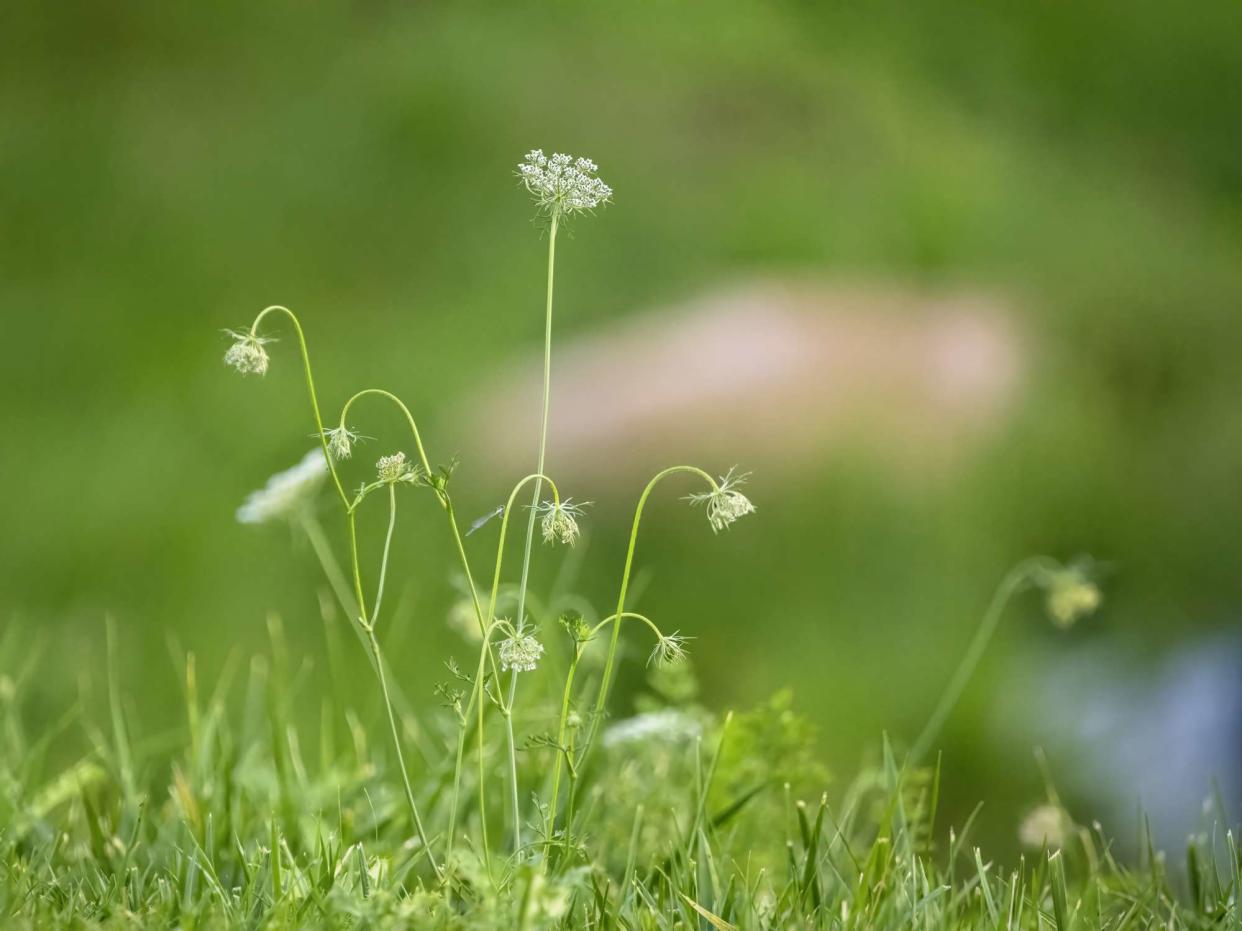
Ali Majdfar / Getty Images
Queen Anne's lacePoison hemlock and Queen Anne’s lace, also known as wild carrot, were introduced to the United States as ornamental garden plants. Both have naturalized widely to the point of being classified as invasive plants in many states, and both are toxic to humans, albeit to varying degrees. All parts of poison hemlock—leaves, flowers, seeds, stems, and roots—are highly toxic to humans, and merely touching it or brushing up against it causes severe injury.
As members of the carrot family (Apiaceae), poison hemlock and Queen Anne’s lace look similar. Luckily, there are also a few distinguishing characteristics that make it possible to tell them apart.
Height: With a mature height of almost 10 feet, poison hemlock is much taller than Queen Anne’s lace, which reaches a little over 3 feet at maturity.
Stems: The stem of poison hemlock is smooth with purple blotches whereas the stem of Queen Anne’s lace is ribbed and hairy. The hollow, finger-thick stems of poison hemlock are considerably thicker than the solid stems of Queen Anne’s lace.
Bloom time: Queen Anne’s lace starts blooming in the summer and persist into the fall, often up until the first frost. Poison hemlock blooms from late spring to early summer.
Differences Between Poison Hemlock and Queen Anne’s Lace
When trying to identify whether the plant in your yard is poison hemlock or Queen Anne’s lace, practice utmost caution. Do not get too close to the plant and never touch it without proper protective gear.
Life Cycle and Appearance
Both plants are biennials whose appearance is different in their first and second year. In the first year, poison hemlock grows in a large rosette of basal leaves up to 2 feet long. Queen Anne’s lace also develops a basal rosette of leaves in the first year, but the leaves are much smaller.
The plants die back during the winter and reemerge in the spring of the second year. Poison hemlock develops branches and grows a flowering stalk up to 8 to 10 feet in height. Queen Anne’s lace sends up a flowering stalk much shorter, only about 3 feet tall.
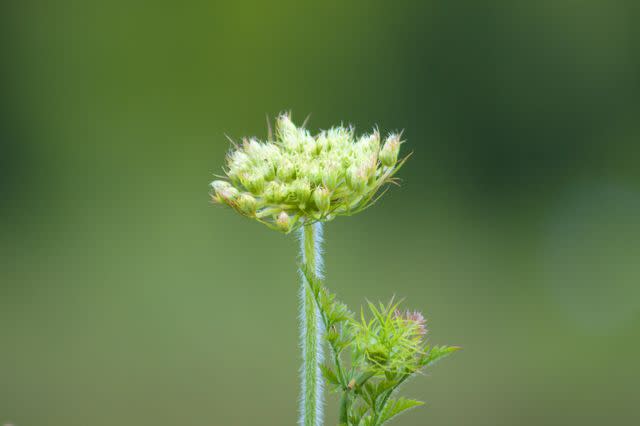
Silviu Carol Cenusa / Getty Images
Queen Anne's lace has a hairy stemFoliage
Both plants have finely divided, lacy leaves but there are distinguishing characteristics. The leaves of poison hemlock are a glossy dark green, hairless, alternate, mostly triangular, and deeply divided. The leaves on the upper part of the stem are not as large as the basal leaves at the bottom. The leaves of Queen Anne’s lace are gray-green in color, 3-lobed, and fern-like, with hairy margins. Most leaves of Queen Anne’s lace are at the base and there are only a few leaves on the stem, so the foliage is more sparse than poison hemlock.
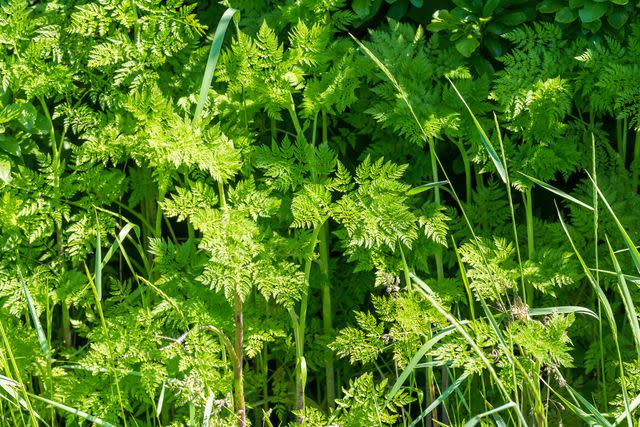
Alexander Zam / Getty Images
Poison hemlock foliage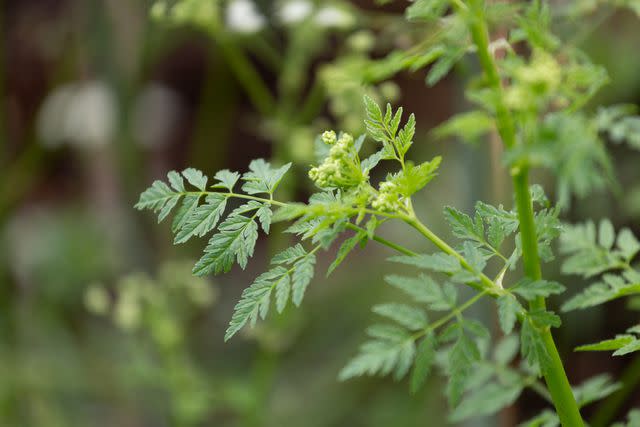
dlinca / Getty Images
Poison hemlock foliageStem
The towering height of the plant and the purple blotches on the thick stem are the telltale characteristics of poison hemlock. Queen Anne’s lace is easy to identify based on its bristly, hairy stem that has vertical ribs and is much thinner than that of poison hemlock.
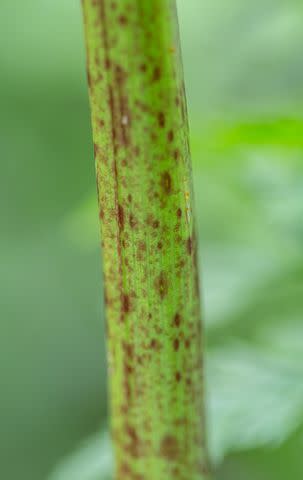
dlinca / Getty Images
The stem of poison hemlock has purple blotchesFlowers
A look at the flowers might make it difficult to tell what plant it is because both poison hemlock and Queen Anne’s lace have white, delicate, umbrella-like flowers. The flowers of poison hemlock grow in clusters whereas Queen Anne’s lace is a flat-topped compound umbel, and sometimes there is a dark purple flower in the center of the umbel, but otherwise the difference between the two is not easy to discern.
There are two ways to identify Queen Anne’s lace based on its flowers. Below the flowerhead, there are bracts (leaf-like structures), and as the flowers mature, the heads close tightly, resembling a bird’s nest. The dried flowerheads persist on the stem of poison hemlock and Queen Anne’s lace well into the winter but only the flowerhead of Queen Anne’s lace has that characteristic appearance.
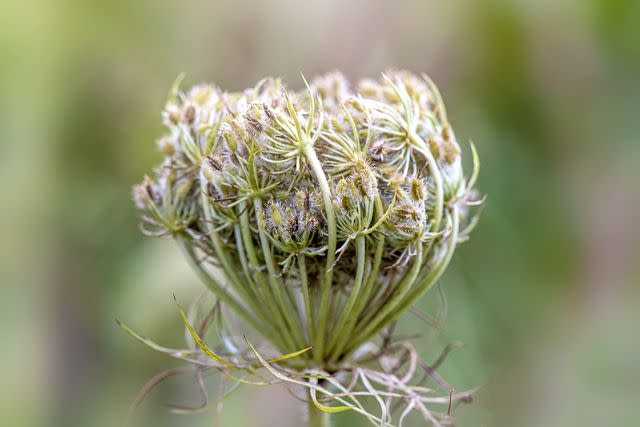
Jacky Parker Photography / Getty Images
Queen Anne's lace seedhead
| Queen Anne’s lace | Poison hemlock |
Flower shape | Lacy bracts under the white flower heads | No bracts |
Stem | Thin, hairy, ribbed, solid, green | Sturdy, smooth, hollow, green with purple blotches |
Height | 2 to 3 ft. tall | 8 to 10 ft. tall |
Bloom time | Early summer through fall | May through August |
How to Get Rid of Poison Hemlock
If you have positively identified poison hemlock, you should remove it promptly. The method depends on the age of the plant and the level of infestation but whatever you do to get rid of it, wearing protective clothing and avoiding any bare-skin physical with the plant is a must.
Usually you can pull small first-year seedlings by hand, ideally after a good rain when the soil is soft so you can lift the plant with its entire tap root. Larger individual plants require removal with a shovel. When dealing with a heavy infestation, like a patch of poison hemlock, start by mowing it repeatedly in the early summer before the plant has set seeds. The last resort after manual removal is to use a broad-spectrum herbicide in the first year of the plant’s life cycle. Because heavy infestations go hand in hand with a considerable seed bank in the soil (and poison hemlock seeds remain viable for up to six years), one herbicide application is likely not sufficient to get rid of it.
Dispose of pulled plants in the garbage, not in the compost. The seeds can spread from there and composting does not get rid of the toxins.
Frequently Asked Questions
Is Queen Anne’s lace poisonous to humans?
If the sap of the plant touches the skin and it is exposed to sunlight, it can cause a rash. It is toxic when ingested.
Is poison hemlock OK to touch?
Never touch poison hemlock with your bare hands, and avoid any skin contact, as the toxins can also be absorbed through the skin and it can reach the lungs.
Should I pull Queen Anne’s lace from my yard?
Yes and no. Because Queen Anne’s lace is an invasive plant in many states, it is usually a good idea to pull it. On the other hand, its flowers attract native butterflies, bees, and other beneficial insects. The compromise is to remove the plants after the bloom and before the seeds mature.

